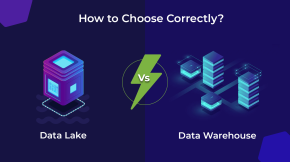Solving Data- Duplication problem using Machine Learning Algorithm
If you work with large amounts of data, you’ve probably heard the term data deduplication. Here’s a clear definition of what “data duplication” means, and why you need an advance data deduplication solution. Data deduplication is a critical component for managing the size and cost of a continuously growing data store and also getting rid of data redundancy.
What does data deduplication mean?
At its simplest definition, data deduplication is a process that eliminates redundant copies of data and ensures that only one unique instance of data is retained on storage media. The data is analyzed to identify duplicates to ensure the single instance is indeed the single file.
Why do we need to do data deduplication?
Duplication is a problem that all businesses across the globe encounter. The business collects a large amount of data about their customers, prospects, and suspects, but the validity of data suffers due to data redundancy. Businesses often do not yield the expected outcomes due to data redundancy. Since different business forms have advanced and focusing on potential clients presently takes puts over an assortment of channels, the necessity of deduplication has increased ten-fold.
As per the research of the Data Warehouse Institute, data quality problems cost U.S. businesses more than $600 billion every year.
Why do we need a fuzzy solution?
At the point when data clearly matches, normal SQL joins ought to be utilized to discover matching records. But when the data has slight variations, we require another solution. This is where fuzzy logic comes into play.
Database queries for duplicates won’t discover spelling errors, grammatical mistakes, missing values, changes of location, or individuals who forgot to include their middle name.
Fuzzy data matching embarks on the quest to identify and unify records that may seemingly stand as unique. It functions by pairing data entities that, while not exactly identical, are very close approximations of each other. This method lays the groundwork for a sophisticated data management system designed to navigate through the intricate labyrinth of real-world data, teeming with imperfections and complexities.
For Example:
A person’s name is Samantha Brian; it is present in a different legal document as Samantha Oliva Brian; in her employer’s document, it is listed as Samantha O. Brian, and so on. When you club this data, it creates three different records instead of one.
The answer to these duplication issues is to utilize fuzzy matching. Fuzzy matching is a technique to score the similarity of data.
There are many different use cases where data deduplication is a must. Your necessities could be any number of substance varieties that need deduplication; for example, stock, where items names are slightly different despite the fact that they are a similar item. For this kind of duplication, we need a fuzzy matching solution.
How does fuzzy matching work?
Consider the duplicate customer records for customer Samantha Brian. This is present as “Samantha Oliva Brian” and “Samantha O. Brian” in the form of two different records. Fuzzy matching counts the number of times each letter appears in these two names and concludes that the names are fairly similar. In this case, we would obtain a high fuzzy matching score of 0.95, where 0 means ‘no match’ and 1 means an ‘exact match.’
Whereas if we compare “Michelle Johnson” to another customer “John Smith”. Once again, fuzzy matching counts up the number of times each letter appears in these two names and concludes that these two entries are not similar. In this case, we would obtain a low fuzzy matching score of 0.2, which is not very indicative of a match.
Where does Machine Learning come into the picture?
It isn’t enough to have the fuzzy matching scores; we also need to know the combinations of similar database fields, and how similar those database fields need to be in order to be indicative of a match. That’s where Machine Learning comes into the picture.
You can train the Machine Learning Model using this fuzzy machine logic using historical data as input.
Once trained, the Machine Learning Model will predict whether or not a pair(s) of data are truly duplicates. Just send the model the fuzzy matching scores for any new pair of customer records, and it will tell you the probability that they truly are duplicates.
Isn’t it interesting how you can use Fuzzy Logic and Machine learning to solve the real-world data duplication problem in a simple way?
At Beyond Key, we are always doing great work with the latest technology.
If you are facing the problem of data duplication from an external source or internal duplicates, feel free to contact our experts to see how we can help!




















